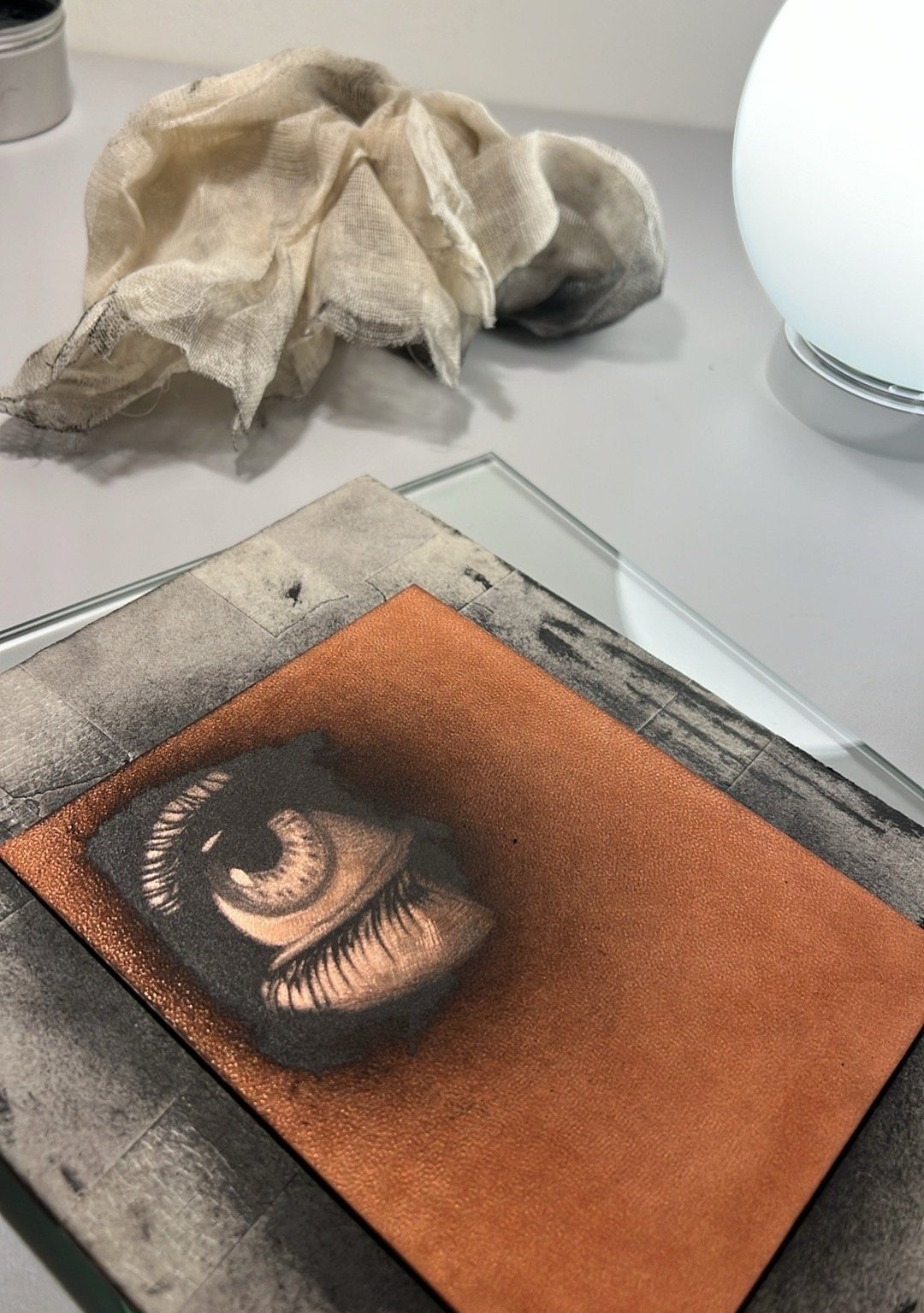From Darkness to Light: The Fascinating Process of Mezzotint
Mezzotint is a form of printmaking that produces beautifully rich images, full of velvety shadows and delicate highlights. It’s a traditional technique with a meditative process, perfect for those who enjoy the tactile, hands-on nature of creating art. Ever since I first saw a mezzotint print, I’ve been drawn to the process. Both for the dark and moody nature of the images it produces, but also the meditative nature of the image-making process itself.
Want to know what mezzotint is and how it works? let me walk you through it!
What Is Mezzotint?
At its heart, mezzotint is all about light and shadow. The word itself comes from the Italian mezza tinta, meaning “half-tone.” Unlike other printmaking techniques that rely on lines or dots, mezzotint allows artists to create smooth tonal gradients, perfect for moody or atmospheric pieces. It’s a method often praised for its painterly quality, as it can produce an incredible range of tones, from deep, inky blacks to soft, glowing whites.
How Does It Work?
The mezzotint process begins with a copper plate. Traditionally, this plate is “rocked” using a specialised tool called a rocker. The rocker is made up of tiny, sharp teeth, and as it’s moved across the plate in a series of overlapping arcs, it creates thousands of tiny burrs. These burrs give the plate its rough texture, which holds ink and produces a beautiful velvety black when printed.
Above: a pre-rocked plate with scraping and burnishing tools
While I don’t currently rock my own plates (I source pre-rocked plates), this step is crucial to creating the dark, rich base that makes mezzotint so distinctive and, in my opinion, so beautiful.
Once the plate is rocked, the real magic begins. The artist uses scrapers and burnishers—special tools for smoothing and polishing the plate—to carefully work the surface. By smoothing certain areas of the plate, I reduce its ability to hold ink. The smoother the surface, the lighter it appears in the final print. This allows me to ‘paint’ with light, gradually bringing an image forward out of the darkness.
The Joy of Watching an Image Emerge
One of the most rewarding aspects of mezzotint is watching the image slowly reveal itself. It’s a meticulous and time-consuming process, but there’s a real meditative quality about the work. Each scrape and polish is deliberate, and the transformation from a rough, dark surface to a luminous image feels magical every time.
The finished plate is inked by hand, with the ink worked carefully into the grooves and burrs. After wiping the surface clean, the ink remains only in the textured areas. The plate is then pressed onto paper using a printing press, and the final image is revealed.
Above: ‘In Sight’ mezzotint plate - work in progress
Why Choose Mezzotint?
Mezzotint stands out for its ability to create stunning contrasts and gradients that other printmaking methods struggle to achieve. Its rich tones make it perfect for capturing atmosphere, emotion, and even realism. While it’s a labor-intensive process, the results are worth it. There’s a depth and softness to mezzotint prints that simply can’t be replicated by digital means.
It’s not for the faint-hearted or those seeking to be time efficient. The process is one of the most time consuming in printmaking. But for me, it’s also the most rewarding.
My Connection to Mezzotint
I fell in love with mezzotint for its tactile, hands-on nature and its ability to produce truly unique works of art. For me, it’s not just about the final print but also about the process—the quiet, intentional work of coaxing light out of darkness. In the modern world, it feels so satisfying to be doing such manual, tactile work.
If you’ve ever been curious about how mezzotint works or are considering exploring printmaking yourself, I encourage you to give it a try (or simply enjoy the magic of the finished pieces!). It’s a technique steeped in history and craftsmanship, and there’s nothing quite like it.



